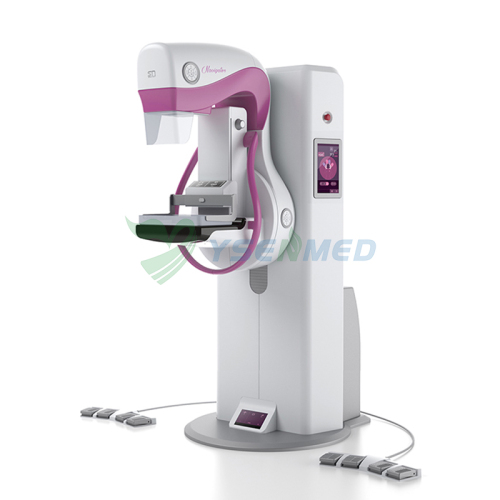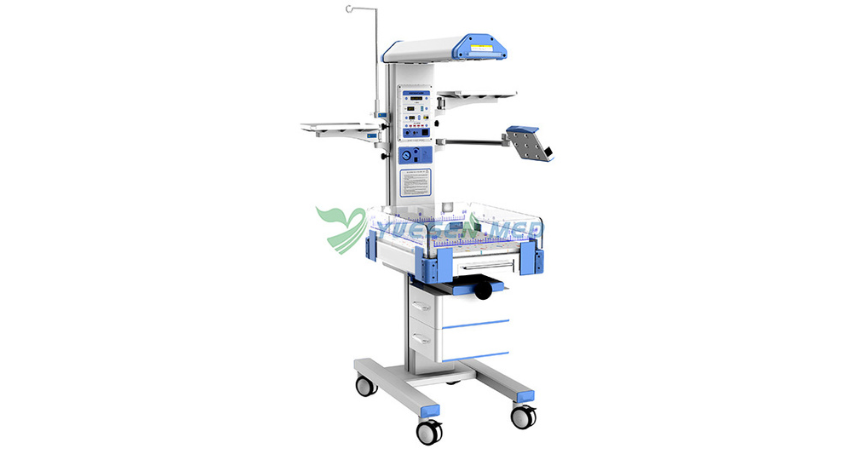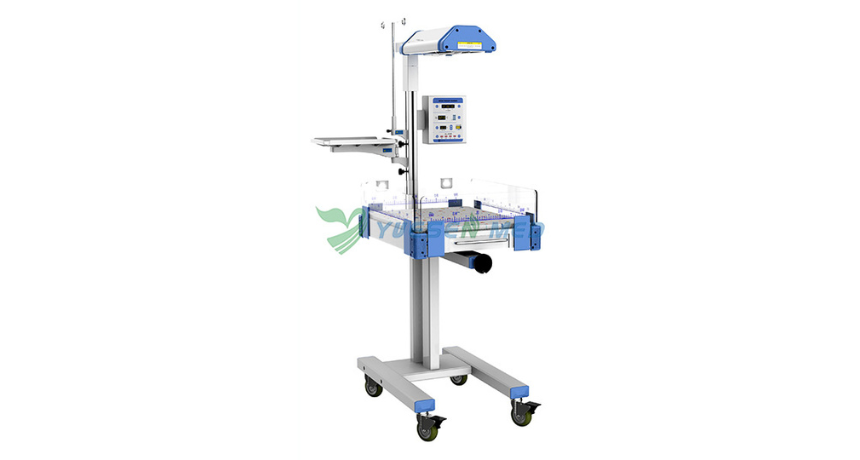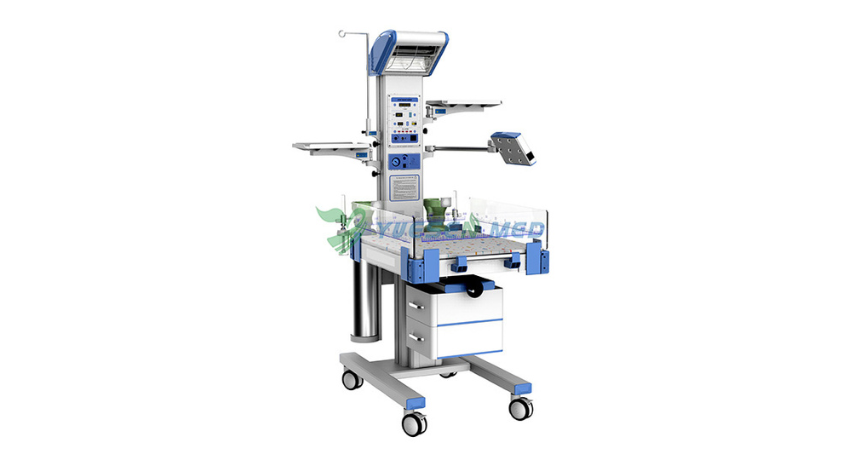Hot Products
YSX500D 50kW DR system set up and put into service in Cambodia.
YSENMED YSX500D 50kW digital x-ray system has been successfully set up and put into service in a hospital in Cambodia.
YSX056-PE serving as a vehicle-mounted x-ray in the Philippines
YSX056-PE 5.6kW portable x-ray unit has been adapted to fit on a truck, to provide mobile x-ray examination service for remote communities in the Philippines.
X Ray Machine To Zimbabwe
x ray machine, 50KW x ray machine
Microscope To Malawi
Achromatic objectives: 4X、10X、40X(S), 100X(S、Oil) Wide field eyepiece: WF10X(WF16X for option) Eyepiece head: Sliding binocular head inclined at 45° Stage: Double layer mechanical stage size 140X140mm, moving range 75X45mm Focusing: Coaxial coarse and
3D Digital Breast Tomosynthesis: Revolutionizing Early Detection
Views : 2228
Update time : 2024-09-20 10:57:00
Breast cancer is one of the most common cancers affecting women worldwide. Early detection is crucial, and medical technology is constantly evolving to improve screening methods. One of the most exciting advancements in this field is 3D Digital Breast Tomosynthesis (DBT). But what exactly is it, and how is it changing the game for breast cancer detection? Let's dive in!

What is 3D Digital Breast Tomosynthesis?
3D Digital Breast Tomosynthesis is a state-of-the-art imaging technique that creates a three-dimensional picture of the breast. Unlike traditional 2D mammograms, which can sometimes hide abnormalities, DBT takes multiple X-ray images from different angles and reconstructs them into a 3D model. This allows radiologists to see layers of breast tissue, making it easier to spot potential issues.
How Does It Work?
Imagine flipping through a book. A traditional mammogram is like viewing just one page at a time, while DBT lets you see the entire book, page by page. The process involves:
1. Patient Positioning: The patient stands in front of the mammography machine.
2. X-ray Capture: The machine moves in an arc, taking several images from different angles.
3. Image Reconstruction: A computer processes these images to create a detailed 3D view of the breast.
Why Is 3D DBT Important?
The importance of 3D DBT lies in its ability to provide clearer images, which can lead to earlier and more accurate diagnoses. Studies have shown that DBT can detect cancers that traditional mammograms might miss. This means fewer false negatives and a better chance of catching breast cancer in its early stages.
The Benefits of 3D Digital Breast Tomosynthesis
1. Enhanced Detection Rates
One of the standout benefits of DBT is its enhanced detection rates. Research indicates that DBT can improve cancer detection by up to 40% compared to conventional mammography. This is particularly significant for women with dense breast tissue, where traditional methods often struggle.
2. Reduced False Positives
Have you ever received a call back after a mammogram, only to find out everything was fine? It's nerve-wracking! DBT helps reduce false positives, meaning fewer women are called back for additional testing. This not only alleviates anxiety but also saves time and resources.
3. Improved Visualization of Structures
The 3D images produced by DBT allow radiologists to examine breast tissue layer by layer. This improved visualization helps in distinguishing between overlapping tissues, making it easier to identify abnormalities.
4. Shorter Screening Times
While the procedure itself may take a little longer due to the extra images taken, the overall screening process can be more efficient. With clearer images, radiologists can make quicker decisions, leading to faster results for patients.
Who Should Consider 3D DBT?
Women with Dense Breasts
If you have dense breast tissue, you might benefit significantly from DBT. Dense tissue can obscure tumors in traditional mammograms, making DBT a valuable tool for early detection.
Women with a Family History of Breast Cancer
If breast cancer runs in your family, discussing DBT with your healthcare provider can be a smart move. Early detection can be life-saving, and DBT is a powerful ally in this fight.
Women Over 40
The American College of Radiology recommends that women start annual mammograms at age 40. If you fall into this age group, consider asking about 3D DBT during your next screening.
How Does 3D DBT Compare to Traditional Mammography?
Similarities
Both methods use X-rays to create images of the breast, and both aim to detect abnormalities. They are both essential tools in the fight against breast cancer.
Differences
The key difference lies in the imaging technique. Traditional mammograms provide a flat, 2D image, while DBT offers a detailed 3D view. This difference can significantly impact detection rates and the accuracy of diagnoses.
What to Expect During a 3D DBT Screening
Preparation
Preparing for a DBT screening is similar to preparing for a traditional mammogram. Here are a few tips:
- Schedule Wisely: Try to schedule your appointment when your breasts are least likely to be tender—usually a week after your period.
- Avoid Deodorants: Some products can interfere with the imaging process, so skip them on the day of your appointment.
The Procedure
During the screening, you'll stand in front of the machine, and a technician will position your breast for the X-ray. The machine will move around you, capturing images from various angles. The entire process typically takes about 15-30 minutes.
Post-Procedure
After your screening, you can return to your normal activities. Results usually take a few days to be processed, and your healthcare provider will discuss them with you.
Potential Limitations of 3D DBT
Cost
While many insurance companies are starting to cover DBT, it may still be more expensive than traditional mammograms. Always check with your insurance provider to understand your coverage.
Availability
Not all facilities have the equipment necessary for 3D DBT. If you're interested, you may need to find a specialized center.
Radiation Exposure
Though the radiation dose from DBT is similar to that of conventional mammography, some patients may still have concerns. It's essential to discuss these with your healthcare provider.
The Future of Breast Cancer Screening
Technological Advancements
As technology continues to evolve, we can expect even more improvements in breast cancer screening. Innovations like artificial intelligence (AI) are being integrated into imaging processes, enhancing detection capabilities even further.
Increased Accessibility
As awareness of the benefits of DBT grows, more facilities are likely to adopt this technology. This increased availability will make it easier for women to access cutting-edge screening methods.
Conclusion
3D Digital Breast Tomosynthesis is truly revolutionizing early detection of breast cancer. With its enhanced detection rates, reduced false positives, and improved visualization, DBT is a game-changer in the fight against this disease. If you're due for a mammogram or have concerns about breast cancer, consider discussing DBT with your healthcare provider. Early detection can save lives, and with advancements like DBT, we're one step closer to a future where breast cancer is caught and treated earlier than ever before. So, don't wait—take charge of your health today!

What is 3D Digital Breast Tomosynthesis?
3D Digital Breast Tomosynthesis is a state-of-the-art imaging technique that creates a three-dimensional picture of the breast. Unlike traditional 2D mammograms, which can sometimes hide abnormalities, DBT takes multiple X-ray images from different angles and reconstructs them into a 3D model. This allows radiologists to see layers of breast tissue, making it easier to spot potential issues.
How Does It Work?
Imagine flipping through a book. A traditional mammogram is like viewing just one page at a time, while DBT lets you see the entire book, page by page. The process involves:
1. Patient Positioning: The patient stands in front of the mammography machine.
2. X-ray Capture: The machine moves in an arc, taking several images from different angles.
3. Image Reconstruction: A computer processes these images to create a detailed 3D view of the breast.
Why Is 3D DBT Important?
The importance of 3D DBT lies in its ability to provide clearer images, which can lead to earlier and more accurate diagnoses. Studies have shown that DBT can detect cancers that traditional mammograms might miss. This means fewer false negatives and a better chance of catching breast cancer in its early stages.
The Benefits of 3D Digital Breast Tomosynthesis
1. Enhanced Detection Rates
One of the standout benefits of DBT is its enhanced detection rates. Research indicates that DBT can improve cancer detection by up to 40% compared to conventional mammography. This is particularly significant for women with dense breast tissue, where traditional methods often struggle.
2. Reduced False Positives
Have you ever received a call back after a mammogram, only to find out everything was fine? It's nerve-wracking! DBT helps reduce false positives, meaning fewer women are called back for additional testing. This not only alleviates anxiety but also saves time and resources.
3. Improved Visualization of Structures
The 3D images produced by DBT allow radiologists to examine breast tissue layer by layer. This improved visualization helps in distinguishing between overlapping tissues, making it easier to identify abnormalities.
4. Shorter Screening Times
While the procedure itself may take a little longer due to the extra images taken, the overall screening process can be more efficient. With clearer images, radiologists can make quicker decisions, leading to faster results for patients.
Who Should Consider 3D DBT?
Women with Dense Breasts
If you have dense breast tissue, you might benefit significantly from DBT. Dense tissue can obscure tumors in traditional mammograms, making DBT a valuable tool for early detection.
Women with a Family History of Breast Cancer
If breast cancer runs in your family, discussing DBT with your healthcare provider can be a smart move. Early detection can be life-saving, and DBT is a powerful ally in this fight.
Women Over 40
The American College of Radiology recommends that women start annual mammograms at age 40. If you fall into this age group, consider asking about 3D DBT during your next screening.
How Does 3D DBT Compare to Traditional Mammography?
Similarities
Both methods use X-rays to create images of the breast, and both aim to detect abnormalities. They are both essential tools in the fight against breast cancer.
Differences
The key difference lies in the imaging technique. Traditional mammograms provide a flat, 2D image, while DBT offers a detailed 3D view. This difference can significantly impact detection rates and the accuracy of diagnoses.
What to Expect During a 3D DBT Screening
Preparation
Preparing for a DBT screening is similar to preparing for a traditional mammogram. Here are a few tips:
- Schedule Wisely: Try to schedule your appointment when your breasts are least likely to be tender—usually a week after your period.
- Avoid Deodorants: Some products can interfere with the imaging process, so skip them on the day of your appointment.
The Procedure
During the screening, you'll stand in front of the machine, and a technician will position your breast for the X-ray. The machine will move around you, capturing images from various angles. The entire process typically takes about 15-30 minutes.
Post-Procedure
After your screening, you can return to your normal activities. Results usually take a few days to be processed, and your healthcare provider will discuss them with you.
Potential Limitations of 3D DBT
Cost
While many insurance companies are starting to cover DBT, it may still be more expensive than traditional mammograms. Always check with your insurance provider to understand your coverage.
Availability
Not all facilities have the equipment necessary for 3D DBT. If you're interested, you may need to find a specialized center.
Radiation Exposure
Though the radiation dose from DBT is similar to that of conventional mammography, some patients may still have concerns. It's essential to discuss these with your healthcare provider.
The Future of Breast Cancer Screening
Technological Advancements
As technology continues to evolve, we can expect even more improvements in breast cancer screening. Innovations like artificial intelligence (AI) are being integrated into imaging processes, enhancing detection capabilities even further.
Increased Accessibility
As awareness of the benefits of DBT grows, more facilities are likely to adopt this technology. This increased availability will make it easier for women to access cutting-edge screening methods.
Conclusion
3D Digital Breast Tomosynthesis is truly revolutionizing early detection of breast cancer. With its enhanced detection rates, reduced false positives, and improved visualization, DBT is a game-changer in the fight against this disease. If you're due for a mammogram or have concerns about breast cancer, consider discussing DBT with your healthcare provider. Early detection can save lives, and with advancements like DBT, we're one step closer to a future where breast cancer is caught and treated earlier than ever before. So, don't wait—take charge of your health today!
Related News
Read More >>
 What is the Difference Between Radiant Warmer and Phototherapy?
What is the Difference Between Radiant Warmer and Phototherapy?
Apr .19.2025
Radiant warmers and phototherapy are crucial in neonatal care, but they serve different purposes. Let's dive into the nitty-gritty of these two techniques and explore how they differ, and when each is appropriate.
 YSX056-PE portable digital x-ray unit set up in the Philippines
YSX056-PE portable digital x-ray unit set up in the Philippines
Apr .19.2025
YSX056-PE portable digital x-ray unit has been set up in a hospital in the Philippines and the good quality images please the doctors.
 Is an Infant Radiant Warmer Good for Babies' Health?
Is an Infant Radiant Warmer Good for Babies' Health?
Apr .13.2025
What exactly is the infant radiant warmer, and how does it contribute to a baby's health? Let's dive into this topic and explore the ins and outs of infant radiant warmers.
 What is an Infant Radiant Warmer?
What is an Infant Radiant Warmer?
Apr .12.2025
One of the unsung heroes in neonatal care is the infant radiant warmer. But what exactly is it? Let's dive into the world of infant care and explore the ins and outs of this vital device.



